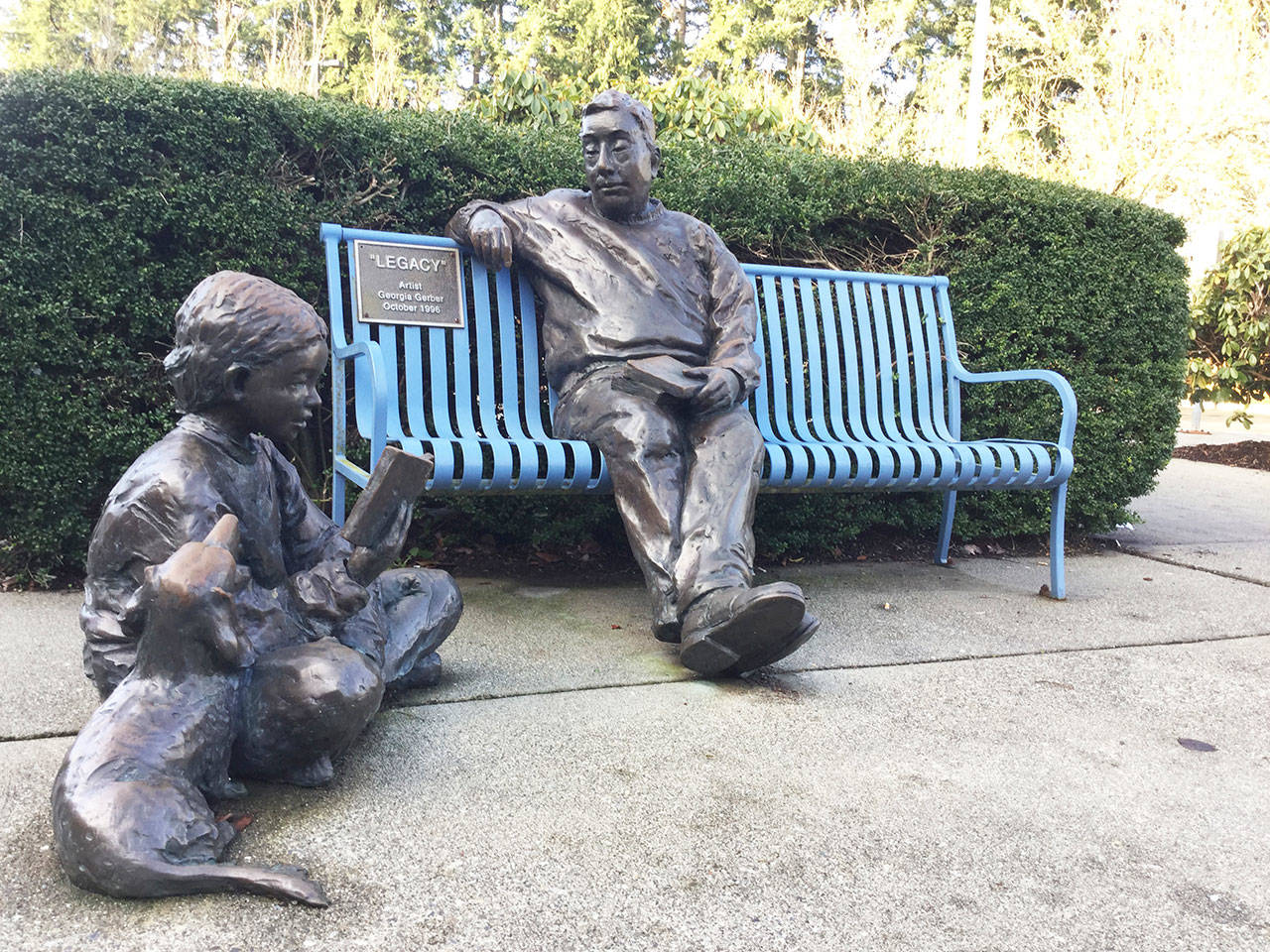Three decades ago, a cream-colored sculpture in downtown Comeford Park depicted Marysville founder James Comeford’s wife, Maria, reading to students. The sculpture is long gone, a victim of vandals with no appreciation for history or art.
If you stop by Marysville’s 10 most-visited sites, you won’t find much in the way of public art to catch your eye, spark a conversation, better connect with the community’s culture, or just pose for selfies to post on social media.
There’s the inland waterway wall mural at Fourth Street and State Avenue. The bronze “Legacy” sculpture of a girl with her dog reading to her grandfather on a bench outside the Marysville Library, and stained glass artwork inside. A person-sized rooster sculpture greets visitors at Jennings Park. Stone artwork and decorative benches along historic Third Street inlaid with swimming salmon. Soroptimist International of Marysville raised money to build the Welcome to Marysville fountain at Fourth and I-5. They also funded the “Boy With a Sailboat” bronze sculpture at Ebey Waterfront Park that was later vandalized and is now a landscaped mound of stone a spinning metal wind sculpture.
There isn’t much else, and most of these pieces were installed a decade or more ago.
That’s unfortunate.
With a new civic center coming, signs of economic promise within the Cascade Industrial Center, plans to extend walking and bicyling trails and a city still trying to unriddle its identity, now’s a good time to bring public art into the conversation.
Public art provides a different way to experience a community. It reflects the city’s spirit, values, vibrancy and quality of life. It adds color and creativity to an otherwise pedestrian cityscape. Public art also reflects the unique character and cultural diversity of the community, and invites different perspectives. From a health standpoint, public art helps reduce stress and provides places for people to slow down and relax.
Marysville needs to look at establishing a public arts program. Nearby Arlington and Everett are examples of communities that have the two main ingredients necessary to build successful public art programs: a stable funding source, and an organized nonprofit group of local artists.
Arlington has the right idea, now home to a public art collection that includes more than 50 pieces downtown, along Centennial Trail and scattered around public places.
To fund more public art, that city last year adopted a law to devote 10 percent of construction sales tax to public art. Based on 2018 construction sales taxes of $549,203, 10 percent generated about $54,000, with a similar amount in 2019. Project grants ranged from $2,000 to $12,000. The funds are only related to private-sector construction, not city construction.
By comparison, Marysville reported $1.5 million in construction sales tax for 2019, which could have earmarked $150,000 for public art projects if it had such a law.
Arlington also benefits from a solid relationship with the Arlington Arts Council. The active nonprofit has had fundraisers year-round for art since before the construction sales tax fund came about.
Marysville needs a similar group of local artists to work with government to establish a public arts program. Marysville government for initiatives such as this are required to be from the “bottom up.” That means that the wellspring of support for public art won’t be dictated by City Hall; it needs to take root from the ground up.
Marysville is a blank canvas for the talented people who live here, and supporters who appreciate more art as a part of city life.


